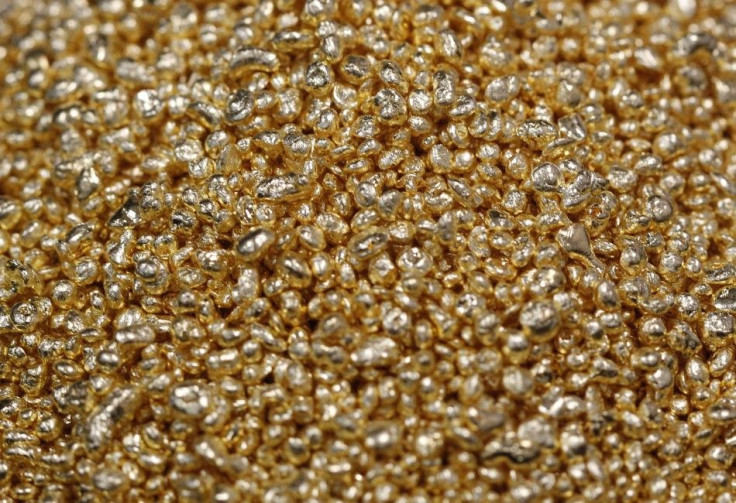Gold Rises to 200-Day Moving Average; Platinum Surging

(REUTERS) -- Gold rose towards $1,640 an ounce on Tuesday and other precious metals rallied, with a rebound in the euro versus the dollar making dollar-priced assets more attractive to holders of other currencies, and after bullion breached a key chart level.
Gold's break above its 200-day moving average, which gave way in mid-December, at $1,634 an ounce prompted fresh buying, with technical analysts saying a close above this level could rekindle upwards momentum in the metal.
Spot gold was up 1.7 percent at $1,637.71 an ounce at 1505 GMT and has climbed nearly 5 percent from the start of the year. U.S. gold futures for February delivery were up by$30.00 an ounce at $1,638.10.
Analysts say a decline in speculative net long positions -- or bets on higher prices -- and a 10 percent drop in gold prices last month have left the metal with plenty of scope to rise.
In terms of precious metals, there is still a lot of catch-up potential, said Commerzbank analyst Daniel Briesemann. Today we're seeing a bit of a short squeeze in almost all the precious metals, especially platinum and palladium.
If you look at the (commodity futures) statistics, you can see that long positions in platinum and palladium are at least at two-year lows, which gives room for very significant price increases if you need to cover your positions.
Meanwhile the euro hit session highs versus the dollar on Tuesday as demand for the single currency from sovereign buyers and macro funds, which are designed to profit from economic events, triggered stop-loss orders on short positions.
Data from the Commodity Futures Trading Commission showed record euro net short positions, and analysts expect the single currency to benefit from bouts of short-covering. The euro is down 1 percent so far this year.
European shares also rose after positive corporate results, while safe-haven German bunds fell. Despite this, sentiment towards European assets remained fragile as investors worried about euro zone debt levels. .EU
Given the enormity of the debt crisis we feel there is still plenty of room for investors and sovereign wealth funds to diversify into gold, said ScotiaMocatta in a note.
On the physical side of the market, buyers in India, the world's biggest gold consumer, took advantage of a drop in local prices to a one-week low to stock up ahead of the wedding season beginning later this month, dealers in Mumbai said.
Buying will continue until March, said Harshad Ajmera, proprietor of JJ Gold House in Kolkata.
India's central bank has allowed four more banks to import precious metals, a move that would boost competition and help reduce premiums in the world's number one importer of bullion.
Silver was up 3.6 percent at $30.04 an ounce, largely tracking gold.
PLATINUM PROSPERS
Platinum group metals were the biggest risers in percentage terms, with spot platinum up 2.4 percent to $1,458.74 an ounce and spot palladium up 3.9 percent at $636.85 an ounce. Platinum earlier hit a one-month high at $1,467.50.
The gold/platinum ratio -- a measure of the number of platinum ounces needed to buy an ounce of gold, which has typically held below 1 -- retreated to 1.12 after hitting its highest in at least 25 years on Monday at 1.16.
As well as riding on gold's coat-tails, platinum was benefiting from reports that Eskom, the power utility of major platinum producer South Africa, had warned of a power shortage.
Platinum's cheap price compared with gold and the threat of supply constraints from South Africa have made it attractive to buyers, analysts said, although stocks are still relatively plentiful and the demand outlook in Europe is soft.
Near term, the possibility of a short-covering rally cannot be ignored. But it doesn't really change the obstacles that platinum will likely encounter this year, UBS said in a note.
Fundamental support alone, from the supply side in this case, is clearly not a big enough reason to prompt investors to return to platinum in their droves, it added.
We have few doubts that platinum will be trading much higher than current levels in six months from now, but for now, the potential for further negative twists and turns in the wider macro environment presents too strong of a challenge for investors to rush back in.
© Copyright Thomson Reuters 2024. All rights reserved.






















